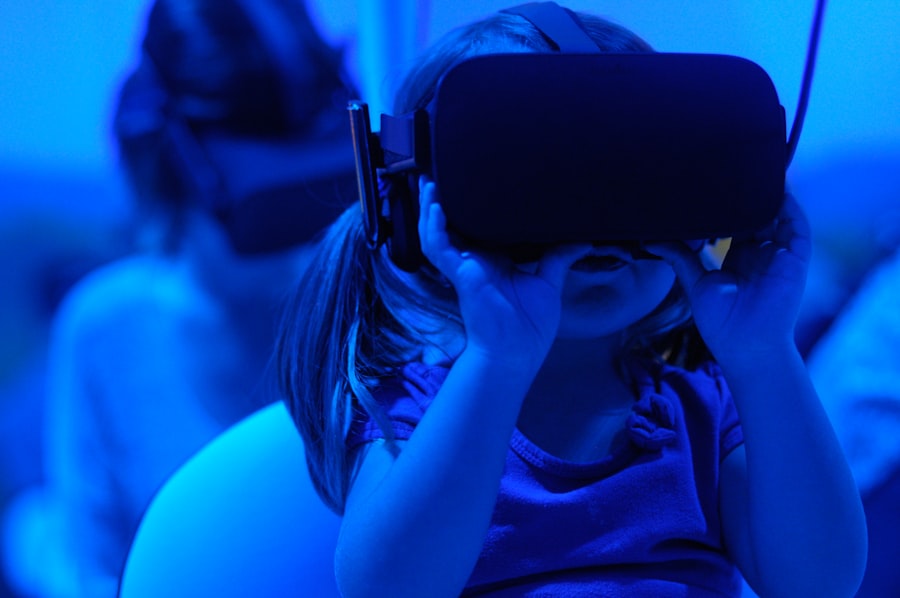The Metaverse is a collective virtual space that merges physical and digital realities, creating an immersive environment where users can interact with each other and digital objects in real-time. This concept transcends traditional online experiences, offering a 3D universe that encompasses various virtual worlds, augmented reality, and even elements of the physical world. The term “Metaverse” was popularized by Neal Stephenson in his 1992 science fiction novel “Snow Crash,” where it described a virtual reality-based successor to the internet.
Today, the Metaverse is often envisioned as a convergence of social media, online gaming, augmented reality (AR), virtual reality (VR), and blockchain technology, allowing for a seamless blend of experiences. In the Metaverse, users can engage in a multitude of activities, from attending virtual concerts and art exhibitions to participating in educational seminars and business meetings. The immersive nature of the Metaverse is facilitated by advanced technologies such as VR headsets, haptic feedback devices, and spatial audio systems, which enhance the sense of presence and realism.
As the Metaverse continues to evolve, it is becoming increasingly integrated into various aspects of daily life, offering new avenues for social interaction, commerce, and entertainment. The potential for economic growth within this digital realm is significant, with companies investing heavily in creating virtual spaces that cater to diverse interests and communities.
Key Takeaways
- The Metaverse is a collective virtual shared space, created by the convergence of virtually enhanced physical reality and physically persistent virtual reality.
- Virtual reality chatting has evolved from text-based chat rooms to immersive 3D environments where users can interact with each other as avatars.
- Interacting with others in virtual reality allows for a more immersive and natural communication experience, with gestures and body language playing a role in conversations.
- Creating a virtual avatar allows users to customize their appearance and express themselves in virtual reality environments.
- Navigating virtual reality environments requires users to familiarize themselves with the controls and movements within the space.
The Evolution of Virtual Reality Chatting
The Dawn of Immersive Interactions
As technology advanced, so did the capabilities of these platforms. The introduction of 3D graphics and more sophisticated user interfaces allowed for richer interactions, paving the way for immersive experiences that mimic real-life conversations. The evolution of VR technology has played a crucial role in this transformation, enabling users to engage in more lifelike interactions through avatars and spatial audio.
The Rise of Social VR Platforms
The rise of social VR platforms marked a significant milestone in the evolution of virtual reality chatting. Platforms like VRChat and AltspaceVR emerged as pioneers in this space, allowing users to create personalized avatars and interact with others in shared virtual environments. These platforms not only facilitated casual conversations but also hosted events such as live performances, game nights, and educational workshops.
A New Era of Self-Expression and Engagement
The ability to express oneself through customizable avatars added a new layer of identity and self-expression, making virtual interactions more engaging and meaningful. As the technology continues to advance, we can expect even more innovative features that enhance the social experience within virtual reality.
Interacting with Others in Virtual Reality

Interacting with others in virtual reality offers a unique experience that differs significantly from traditional online communication methods. In VR, users are not merely represented by static images or text; instead, they inhabit fully realized avatars that can convey emotions and gestures. This embodiment fosters a sense of presence that is often lacking in 2D interactions.
Users can engage in conversations as if they were physically together, utilizing non-verbal cues such as body language and facial expressions to enhance communication. This immersive quality allows for deeper connections and more authentic interactions. Moreover, the spatial aspect of VR adds another dimension to socializing.
Users can navigate through virtual spaces together, exploring environments that range from fantastical landscapes to realistic recreations of real-world locations. This shared exploration can lead to spontaneous conversations and collaborative activities, further enriching the social experience. For instance, friends can gather in a virtual café to chat over coffee or embark on an adventure in a fantasy world, all while feeling as though they are truly together.
The ability to manipulate the environment—such as playing games or engaging in creative projects—also encourages collaboration and teamwork among users.
Creating Your Virtual Avatar
| Metrics | Data |
|---|---|
| Number of virtual avatar options | 100+ |
| Customization options | Hair color, eye color, clothing, accessories |
| Time to create virtual avatar | 5-10 minutes |
| Platform compatibility | Web, mobile, VR |
Creating a virtual avatar is one of the most exciting aspects of engaging in the Metaverse. Avatars serve as digital representations of users, allowing them to express their individuality and creativity in ways that may not be possible in the physical world. Most platforms offer extensive customization options, enabling users to modify their avatars’ appearance, clothing, accessories, and even animations.
This level of personalization allows individuals to embody their ideal selves or experiment with different identities, fostering a sense of freedom and exploration. The process of avatar creation often involves intuitive design tools that allow users to adjust various parameters easily. Some platforms even incorporate advanced technologies like motion capture to create realistic movements and expressions based on the user’s physical actions.
This capability enhances the overall experience by making avatars feel more lifelike and relatable. Additionally, many platforms encourage users to share their creations with others, leading to a vibrant community where individuals can showcase their artistic talents and inspire one another.
Navigating virtual reality environments requires an understanding of both the technology involved and the design principles that govern these spaces. Most VR platforms utilize intuitive controls that allow users to move through environments seamlessly. Users can teleport from one location to another or walk around using motion controllers or VR headsets equipped with tracking sensors.
This level of interactivity enhances immersion, making users feel as though they are genuinely present within the virtual world. The design of virtual environments also plays a critical role in navigation. Well-crafted spaces are often designed with user experience in mind, incorporating landmarks and visual cues that help users orient themselves.
For example, a virtual city might feature distinct buildings or sculptures that serve as reference points for navigation. Additionally, sound design can guide users through environments; spatial audio allows individuals to locate sounds based on their position relative to other objects or avatars within the space. As users become more familiar with navigating these environments, they can explore complex worlds filled with hidden treasures and interactive elements that enhance their overall experience.
Virtual Reality Chatting Platforms

Endless Creativity and Exploration
The platform supports user-generated content, allowing for endless creativity and exploration within its expansive universe.
Community Building and Events
Another notable platform is AltspaceVR, which focuses on hosting events and gatherings within its virtual spaces. Users can attend live performances, participate in workshops, or simply socialize with friends in themed environments. AltspaceVR emphasizes community building by providing tools for event organizers to create engaging experiences for attendees.
Gamified Social Interaction
Similarly, Rec Room offers a gamified approach to social interaction, allowing users to play games together while chatting in real-time. Each platform caters to different interests and preferences, contributing to the diverse landscape of virtual reality chatting experiences available today.
The Future of Chatting in the Metaverse
As technology continues to advance at an unprecedented pace, the future of chatting in the Metaverse holds immense potential for innovation and growth. One significant trend is the integration of artificial intelligence (AI) into virtual interactions. AI-driven avatars could enhance conversations by providing real-time translations or even simulating emotional responses based on user input.
This capability would break down language barriers and create more inclusive environments where individuals from diverse backgrounds can connect effortlessly. Moreover, advancements in haptic feedback technology may revolutionize how users experience social interactions in VR. Imagine being able to feel a handshake or a hug through specialized gloves or suits designed for immersive experiences.
Such innovations would deepen emotional connections between users and make virtual interactions feel even more authentic. Additionally, as more businesses recognize the value of virtual spaces for collaboration and networking, we may see an increase in professional applications within the Metaverse—transforming how we conduct meetings and build relationships in a digital landscape.
Tips for a Successful Virtual Reality Chatting Experience
To maximize enjoyment during virtual reality chatting sessions, several tips can enhance the overall experience. First and foremost, ensuring a comfortable physical setup is crucial; users should have enough space to move around freely without obstacles that could lead to accidents or discomfort. Additionally, adjusting headset settings for optimal visual clarity can significantly improve immersion.
Engaging with others requires active participation; users should be open to initiating conversations and exploring new environments together. Practicing good etiquette—such as respecting personal space within virtual settings—can foster positive interactions among participants. Furthermore, taking advantage of customization options for avatars allows individuals to express themselves authentically while also making it easier for others to recognize them within crowded spaces.
Lastly, staying informed about updates and new features on chosen platforms can enhance user experience significantly. Many platforms regularly introduce new tools or events that enrich social interactions; being aware of these changes allows users to fully engage with their communities and take advantage of all that the Metaverse has to offer. By following these tips, individuals can cultivate meaningful connections while enjoying the vast possibilities presented by virtual reality chatting experiences.
If you are interested in learning more about the challenges and opportunities in the metaverse, I recommend checking out the article “Challenges and Opportunities in the Metaverse: Ethical Considerations”. This insightful piece delves into the ethical considerations that come with navigating the metaverse and offers valuable insights into how to approach these challenges in a responsible manner.
FAQs
What is a metaverse chat?
A metaverse chat is a virtual space where users can interact with each other using avatars in a 3D environment. It allows for real-time communication and social interaction in a digital world.
How does metaverse chat work?
Metaverse chat works by using virtual reality technology to create a digital environment where users can communicate with each other through text, voice, and sometimes even gestures and body language using their avatars.
What are the benefits of using metaverse chat?
Some benefits of using metaverse chat include the ability to connect with people from around the world, the immersive and interactive nature of the environment, and the potential for new and innovative forms of social interaction and collaboration.
What are some popular metaverse chat platforms?
Some popular metaverse chat platforms include VRChat, AltspaceVR, and Sansar. These platforms offer users the ability to create and customize their own avatars, explore virtual environments, and interact with others in real time.
Is metaverse chat only for gaming?
While metaverse chat has its roots in gaming and virtual reality, it is not limited to gaming. It can be used for a wide range of purposes, including socializing, networking, attending virtual events, and even for business meetings and collaboration.

Leave a Reply